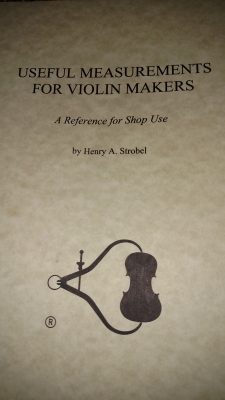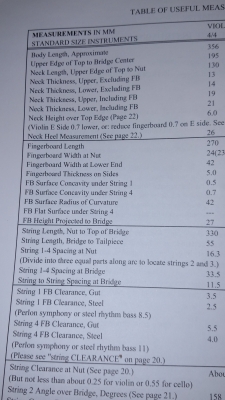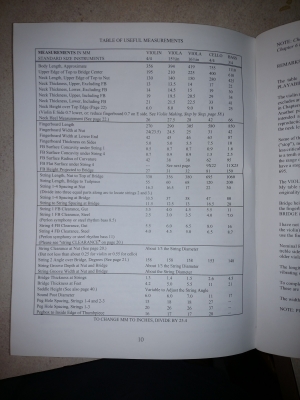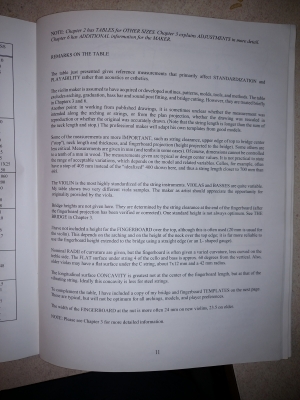Welcome to our forum. A Message To Our New and Prospective Members . Check out our Forum Rules. Lets keep this forum an enjoyable place to visit.
Currently working on errors from the latest (SimplePress) forum update. Many issues have been resoled and others are being worked on. Thank you for your patience.
 Topic RSS
Topic RSS



 (4 votes)
(4 votes) Regulars
 Offline
Offline
I had the pleasure of playing a Fiddlerman Concert violin and was enormously pleased to see the strings so low. I quickly copied the bridge height for my other violin and as I move to other violins I anticipate using the same bridge height.
But I am watching YouTube videos of soloists very closely for fingering and notice that the string height on their violins is very high. It is so high sometimes that you can see the strings bending and stretching as they press down on them. And it doesn't seem to slow them down at all. Not even for fast double stops or broken chords moving up and down the neck.
I really just assumed that no professional would ever play with strings as high as you find them on most standard violin setups.
What's going on? Is there some disadvantage to setting your strings low? Why do these brilliant soloists play with their strings so high?
Regulars







From what I understand, if your strings are too high it can get difficult to play, especially in the higher positions. I'm still only playing in 1st, but if the strings are too high, it could still cause some finger pain. So I think as long as none of the strings are so low they are vibrating against the fingerboard and making weird sounds from that, you should be fine.
☆•*¨*•¸¸¸.•*¨*•☆•*¨*•¸¸¸.•*¨*•☆•*¨*•.¸¸¸.•*¨*•☆
World's Okayest Fiddler
☆•*¨*•.¸¸¸.•*¨* •☆•*¨*¨*•¸¸¸.•*¨*•☆
Honorary advisor
Regulars
 Offline
OfflineI doubt that there are conclusive facts as to the best set up however there can be conclusions as to typical setups for a given situation (I think).
so I have experience playing two setups - I.E. Low and high bridge. My own fiddle has a high bridge that I enjoy playing, up to the the eigth position and then after that I begin to reach/stretch fingers to notes. A perk of having such a high bridge is that the angle of the string allows one to find intonation by feeling when the string touches the finger tip as the instrumentalist hovers his finger over the string moving up the fingerboard. Often when we are playing music it has a lot to do with feel, acustome to the instrument you should know where a specific tone will appear. The nut to bridge angle along a flat fingerboard allows one to feel those tones out.
alternatively, the flater angle from a lower bridge feels really smooth and easy to articulate at the cost of less accuracy.
another discussion can be made about bridge thickness. I feel thicker means louder or bolder, while thinner is light and well thin... But both can be sweet depending on the vibrato.
please excuse punctuation and spelling because I am typing on cellphone.
Regulars
 Offline
Offline
cdennyb said
....Usually I measure from across the fingerboard to the bridge and set the E string at 1.5mm high, the G string 3.5mm high.
Fiddlerman said
....
My favorite specs are 5 mm at the G and 3 mm at the E.
... Your concert is surely set up with 5 mm - 3 mm
...
cdennyb, that is closer to what I am seeing on the Concert bridge. Fiddlerman, do you measure string height at the same place as cdennyb?
Regulars










Hang on indeed!. I've always seen my Luthier measure string height at the end of the finger board. Otherwise the neck angle would make measuring at the bridge irrelevant. Is not the neck angle fairly critical to correct string height? Fiddles with incorrect neck angles (usually too low) would necessitate a bridge that is too low!? I've seen quite a few fiddles that when taking a first look at the bridge, it is obviously lower than 'average' and invariably the neck angle is low. Having said that, this construction/set-up sometimes seems to work, but ime, more often than not, it doesn't.
 Offline
Offline

Seems to me if there are standard dimensions to be taken, there should be a standard position for them to be taken from. The old MENC standard of 3.5 / 5.5 mm seems to be taken from either the end of the fingerboard or a half a centimeter in from the end... most commonly I saw referenced from the top of the fingerboard to the middle of the string. At least that is the info I found from at least 4 different sources on the internet, fwiw. I am actually having a new bridge / soundpost installed on my violin right now (geared pegs and new strings, also :)), and I will be picking it up tomorrow. So I'm glad I caught this thread. I will ask my luthier how he measures string height for some added insight.











Yes... it is easily understood - or even misunderstood - ( and no, I don't have a specific answer - but I "know" what I'm doing here - LOL ) - what seems to be missed out in these details is "exactly where" this measurement is taken from - I understand it but I agree - it is not clear (from the stuff in the internet) - but - at the same time of course - it really matters - if you have for example, nice, low tension strings with too-low-a-separation to the fingerboard - sure - they are gonna ring-against-it on ff playing - and it really IS a fine measure - for higher positions - of course you also want the string as close to the FB as possible - and - you want the bridge shape to allow double / open string stops to "still work" without "unavoidably" bowing an adjacent string.... it is all math..... ( and not easy to bring home - ask @cdennyb - LOL Dennis )
I seriously recommend not copying my mistakes. D'oh -
Please make your own, different mistakes, and help us all learn :-)
I've been watching this thread from day one and the previous post is a book I bought from my luthier a couple years ago.
I think bridge height is relative to string height above bridge end of the fingerboard which is relative to fingerboard height above the belly of the instrument. which is 27 mm, if your fingerboard is the correct length of 270mm.
The "Strobel" books can be purchased through, "Amazon" and are (from what I'm told) considered the holy grail of stringed instrument making and adjustment.
Ken.
1 Guest(s)


 Log In
Log In Register
Register











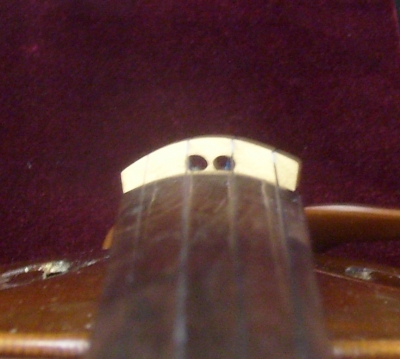





 Online
Online
